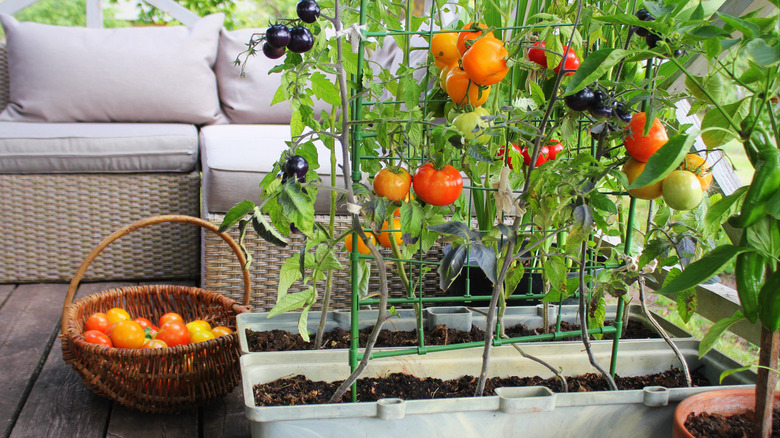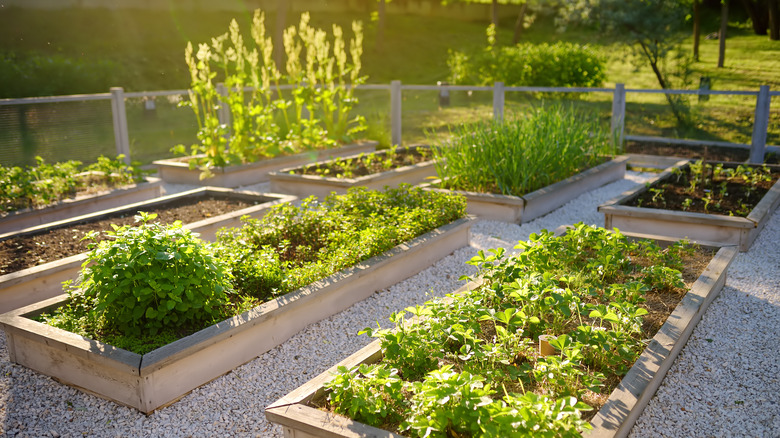How Edible Landscaping Could Change The Way You Eat
Before you get too excited, edible landscaping doesn't mean planting a garden of daffodils that turn into teacups you can eat, á la Willy Wonka's Chocolate Factory. We'd all love a bush full of Snickers bars and a river of chocolate flowing through our backyard – the technology just isn't there yet. While we wait for science to perfect the Snickers bush, however, we can make the outdoor spaces we live in more edible.
As Scientific American points out, lawns are actually the crop Americans grow the most. The nation's emphasis on lawns began around the 18th century when European and Middle Eastern grasses had fully taken root (sorry) in North America, and farmers were spoiled for choice of what to cultivate. But after the American Revolution, when the aristocracy began to holiday in Europe, people couldn't get enough of the aesthetic beauty of French gardens and English country estates.
Over time, the old U. S. of A. began to see the grass around homes as more of a status symbol than a place to raise animals or grow food. However, U.S. News & World Report says that in places like Pueblo, Colorado, where 1 in 5 residents experienced food insecurity in 2019, people are turning to edible landscapes for solutions.
Edible gardens are good for you and the area you live in
Delish says that turf grass, ubiquitous throughout the landscapes of North America, isn't exactly the most fruitful ecosystem. "It barely supports any habitat at all," explains Fred Meyer, the director of Iowa-based non-profit Backyard Abundance. Meyer and his team are devoted to making American lawns less lawn-y (yawn) and more ... well, edible. Fruits, flowers, and plants you can eat replace the boring, expensive-to-maintain blankets of green grass, and the transformation doesn't just make your garden look more interesting: "I was able to transform huge portions of my landscape into something that grew food and habitat for critters," Meyers told Delish, "and saw that my specific actions were actually not only improving my health, but the health of the local beehive, the health of local bird flock, the health of the local stream."
Considering the CDC reports that only 1 in 10 American adults are getting their recommended daily amount of fruits and vegetables, having fresh produce on your doorstep certainly seems like a step in the right direction. And while high costs and limited access to fresh, nutrient-rich fruits and vegetables are barriers for people – particularly young adults, men, and lower-income groups – home and community gardens are one way to move the needle. They could certainly change your eating habits, which in turn will change your life.

